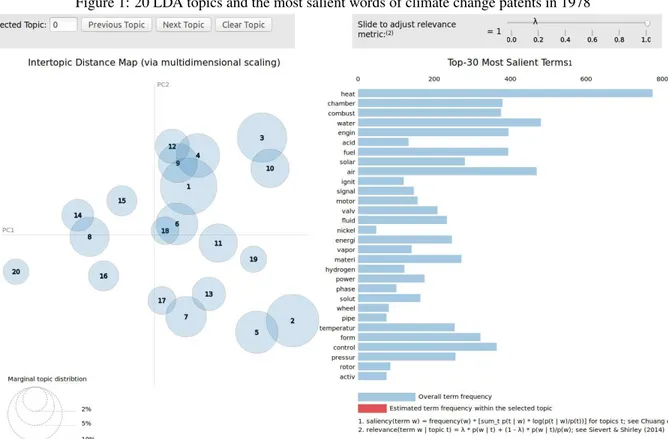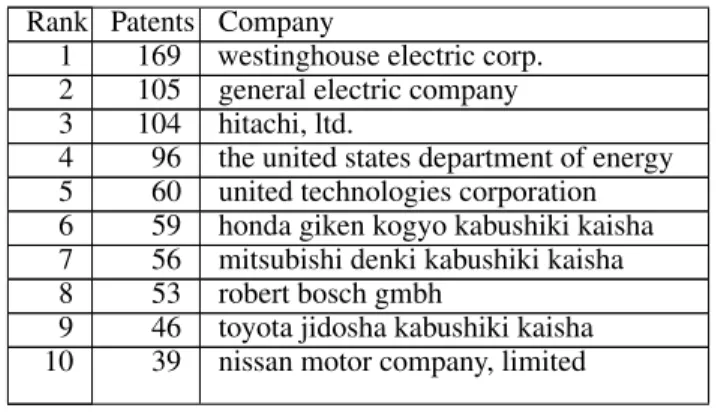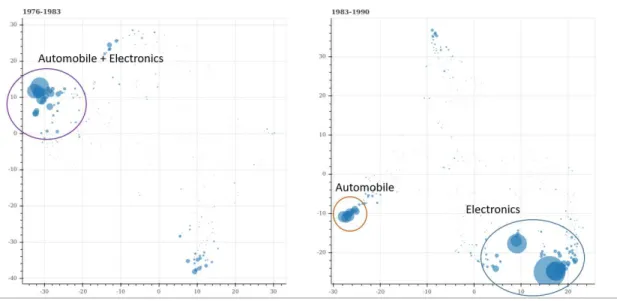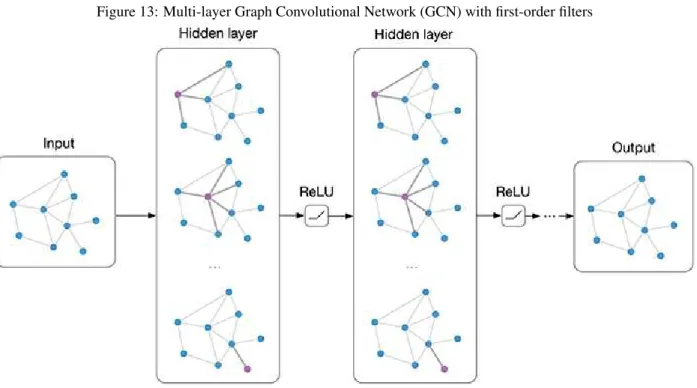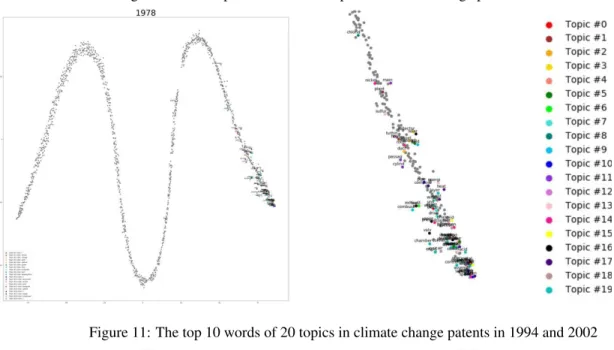https://doi.org/10.4224/40001815
Vous avez des questions? Nous pouvons vous aider. Pour communiquer directement avec un auteur, consultez la première page de la revue dans laquelle son article a été publié afin de trouver ses coordonnées. Si vous n’arrivez pas à les repérer, communiquez avec nous à PublicationsArchive-ArchivesPublications@nrc-cnrc.gc.ca.
Questions? Contact the NRC Publications Archive team at
PublicationsArchive-ArchivesPublications@nrc-cnrc.gc.ca. If you wish to email the authors directly, please see the first page of the publication for their contact information.
https://publications-cnrc.canada.ca/fra/droits
L’accès à ce site Web et l’utilisation de son contenu sont assujettis aux conditions présentées dans le site LISEZ CES CONDITIONS ATTENTIVEMENT AVANT D’UTILISER CE SITE WEB.
READ THESE TERMS AND CONDITIONS CAREFULLY BEFORE USING THIS WEBSITE.
https://nrc-publications.canada.ca/eng/copyright
NRC Publications Archive Record / Notice des Archives des publications du CNRC :
https://nrc-publications.canada.ca/eng/view/object/?id=a36eefbc-961c-4437-84ef-5578a029a394
https://publications-cnrc.canada.ca/fra/voir/objet/?id=a36eefbc-961c-4437-84ef-5578a029a394
Archives des publications du CNRC
For the publisher’s version, please access the DOI link below./ Pour consulter la version de l’éditeur, utilisez le lien DOI ci-dessous.
Access and use of this website and the material on it are subject to the Terms and Conditions set forth at
Patent data analysis
CO-OPPROJECTREPORT
Anbo Xu and Yunli Wang
Multilingual Text Processing Group, Digital Technologies National Research Council Canada
Ottawa, Ontario, K1A 0R6, Canada
Anbo.Xu@nrc-cnrc.gc.ca, Yunli.Wang@nrc-cnrc.gc.ca
August 28, 2019
A
BSTRACTThis project mainly focused on the patent analysis in the KIND (Knowledge and Innovation Network Data) project, a data repository which links patent data to academic funding data and industrial funding data. In this project, we mainly conducted three sections of work on patent data: topic models and competitor analysis using LDA (Latent Dirichlet Allocation) models, patent classification using GCN (Graph Convolutional Network), and information pathway. The experiments show that LDA is able to identify technology trends in patents and GCN’s performance is great on large patent datasets using citation networks as graphs and BOW (bag of words) vectors as features. GCN performs well with a small portion of training data. We are also able to visualize dynamic information flow through information pathway.
Keywords Text Mining · Business Intelligence · Representation Learning
1
Introduction
This project is part of the KIND project. KIND is a data repository which links patent data to academic funding data and industrial funding data. Data analysts can use KIND to extract meaningful technology trend information from various sources of data, increase their innovation monitoring capacity and support policy making in Canadian innovation. In this project, we have mainly done three sections of work on patent data: topic models and competitor analysis, patent classification, and information pathway. By doing topic models and competitor analysis, we can obtain the information of the most popular topics and the leading companies in certain fields, which can be very beneficial for some companies that want to enter those fields or industrial technology advisers that give advice to those companies. The second part of our work, patent classification, aims to use machine learning to automate the process of classifying patents, which can save lots of work for the clerk in the patent and trademark office. Finally, information pathway provides us with a clear visualization of how the information flows in patent data.
2
Topic models and competitor analysis
2.1 MethodWe mainly used three methods: LDA, Author-LDA, and LDA+Word2Vec. We used Gensim’s implementation of LDA and Author-LDA[1].
2.1.1 LDA (Latent Dirichlet Allocation)
Latent Dirichlet Allocation is, as described by its developers in [2], a generative probabilistic model for collections of discrete data such as text corpora. It is a three-level hierarchical Bayesian model, in which each item of a collection is modeled as a finite mixture over an underlying set of topics. Each topic is, in turn, modeled as an infinite mixture
over an underlying set of topic probabilities. In the context of text modeling, the topic probabilities provide an explicit representation of a document.
2.1.2 Author-LDA (the author-topic model)
According to [3], the author-topic model is a generative model for documents that extends LDA to include authorship information. 26 Each author is associated with a multinomial distribution over topics and each topic is associated with a multinomial distribution over words. A document with multiple authors is modeled as a distribution over topics that is a mixture of the distributions associated with the authors.
2.1.3 LDA+Word2Vec
Word2Vec is a model that uses two novel model architectures (continuous bag of words and skip-gram)for computing continuous vector representations of words based on word co-occurrence from very large data sets.[4] In our experiments, we used LDA to find the most salient two hundred words (ten words in each one of twenty topics)each year, and we used Word2Vec to generate word vectors with a hundred dimensions, then plotted the vectors after they were tansformed to two dimensional vectors using tSNE (t-Distributed Stochastic Neighbor Embedding)[5].
2.2 Experiments
In our experiments, we used patent information including IDs, abstracts, assignee names, patent citations and patent classification codes. Our data was obtained from PatentsView, a platform that uses data derived from the USPTO (United States Patent and Trademark Office) bulk data files. We extracted all 6,818,522 patents between 1976 and 2018. Most of our work mainly focused on 74,469 climate change related patents, according to the CPC (Cooperative Patent Classification) codes. The CPC subsection code for climate change is Y02.
The patent data may be found at
http://www.patentsview.org/download/ 2.3 Results
2.3.1 Topic model results
Five topics are generated using LDA model on climate change patents from 1976 to 2018, the top ten words in each topic are showed in table 1. The five climate change related topics are electric vehicle, solar energy, assembly, electronics, and material.
Table 1: Top 10 words of 5 topics from LDA model in climate change dataset
topics word1 word2 word3 word4 word5 word6 word7 word8 word9 word10 Electric
vehicle
vehicl control electr engin batter charg fuel power motor opper Solar energy layer method substrat cell compris form composit materi light solar Assembly heat surfac portion turbin flow air assembl connect posit plural Electronics power devic control signal commun voltag method circuit unit switch Material electrod materi ga method process metal compris cell carbon oxid
Twenty LDA topics and the most salient words of climate change patents in different years in figures 1-6. On the left hand side of each figure, it shows a inter-topic distance map with the sizes of topics as their marginal topic distributions. By comparing these maps, we observe the 20 topics in each year are getting closer until 2018, which means the words in these topics tend to have more similar contexts and meanings. On the right hand side of each figure, it shows a list of the top 30 most salient terms after stemming. By comparing these lists, it indicates that in the early years, climate change related patents were mostly about generating energy and electric circuits (For example, some terms like "heat","ignite","electr", and "circuit" were salient in 1978 and 1994). Similarly, climate change related patents were mostly about network and new kinds of technology (For example, some terms like "wireless","network", and radio were salient in 2018).
Figure 1: 20 LDA topics and the most salient words of climate change patents in 1978
Figure 3: 20 LDA topics and the most salient words of climate change patents in 1994
Figure 5: 20 LDA topics and the most salient words of climate change patents in 2010
2.3.2 Competitor analysis results
The top 10 climate change related companies in 6 different periods in tables 2-7. By comparing these 6 tables, we observe, in general, general electric company has always been one of the top 2 companies (top 1 for most of the time) that had the most patents related to climate change. The top companies were mostly about automobile in the early years like Toyota, Honda, or Nissan, while some new companies that focused on consumer electronic devices appeared on the list in recent years like Samsung, LG, or Apple.
Table 2: The top 10 companies with climate change patents from 1976 to 1983
Rank Patents Company
1 121 general electric company 2 79 westinghouse electric corp.
3 69 the united states department of energy 4 68 toyota jidosha kogyo kabushiki kaisha 5 48 hitachi, ltd.
6 44 united technologies corporation 7 43 westinghouse electric corporation 8 42 nippon soken, inc.
9 38 general motors corporation 10 36 combustion engineering, inc.
Table 3: The top 10 companies with climate change patents from 1983 to 1990
Rank Patents Company
1 169 westinghouse electric corp. 2 105 general electric company 3 104 hitachi, ltd.
4 96 the united states department of energy 5 60 united technologies corporation 6 59 honda giken kogyo kabushiki kaisha 7 56 mitsubishi denki kabushiki kaisha 8 53 robert bosch gmbh
9 46 toyota jidosha kabushiki kaisha 10 39 nissan motor company, limited
Table 4: The top 10 companies with climate change patents from 1990 to 1997
Rank Patents Company
1 217 general electric company 2 75 hitachi, ltd.
3 74 mitsubishi denki kabushiki kaisha 4 72 ford motor company
5 65 united technologies corporation 6 64 siemens aktiengesellschaft 7 61 kabushiki kaisha toshiba
8 58 honda giken kogyo kabushiki kaisha 9 57 toyota jidosha kabushiki kaisha 10 55 motorola, inc.
Table 5: The top 10 companies with climate change patents from 1997 to 2004
Rank Patents Company
1 234 general electric company
2 133 honda giken kogyo kabushiki kaisha 3 128 toyota jidosha kabushiki kaisha 4 122 hitachi, ltd.
5 111 canon kabushiki kaisha
6 103 matsushita electric industrial co., ltd. 7 90 intel corporation
8 88 siemens aktiengesellschaft
9 78 international business machines corporation 10 77 nec corporation
Table 6: The top 10 companies with climate change patents from 2004 to 2011
Rank Patents Company
1 375 general electric company
2 276 toyota jidosha kogyo kabushiki kaisha 3 245 intel corporation
4 199 international business machines corporation 5 169 hitachi, ltd.
6 161 ford global technologies, llc 7 126 denso corporation
8 125 the boeing company 9 124 nissan motor co., ltd. 10 120 samsung electronics co., ltd.
Table 7: The top 10 companies with climate change patents from 2011 to 2018
Rank Patents Company
1 870 toyota jidosha kogyo kabushiki kaisha 2 721 general electric company
3 592 intel corporation 4 583 qualcomm incorporated
5 506 gm global technology operations llc 6 504 ford global technologies, llc
7 501 international business machines corporation 8 478 samsung electronics co., ltd.
9 336 lg electronics inc. 10 299 apple inc.
The clusters of competitors on climate change are showed in figures 7-9. Each company is a blue dot with the size of the number of assigned patents. Shorter distance between companies implies more similarity and similar companies are likely to be competitors. In early years, climate change-related patents were mostly about automobile and electronics, but some new areas have become popular in recent years, like telecommunication or consumer products. The results observed from tables 2-7 also support this finding.
2.3.3 Technology trend
The similarity between the top 10 words in each of 20 topics are showed in figures 10-12. The distance between words indicating the word co-occurrences similarity in patent abstract, and colors of words show topics. It shows that words in the same topic tend to be close to each other. In addition, words in the early years are farther from each other, and formed a snake-like shape. Since 2002, the words have become closer and more evenly distributed, meaning that they
Figure 7: All companies with climate change patents from 1976 to 1990
Figure 8: All companies with climate change patents from 1990 to 2004
had more similar meanings and contexts. One possible explanation for this phenomenon is that the different kinds of technology used in these different areas have merged over the years and have been applied to wider ranges.
Through all the comparisons and analysis mentioned above, we can observe shifts of technology trends. A shift of the main topics on climate changed over the years from automobile to electronics, consumer products, and new technologies (figures 1-9 and tables 2-7).
3
Patent classification
3.1 MethodTo classify patents, we used a deep learning model called Graph Convolutional Network. GCN performs semi-supervised learning on graph-structured data that is based on an efficient variant of convolutional neural networks which operate directly on graphs (Figure 13).The developers motivate the choice of their convolutional architecture via a localized first-order approximation of spectral graph convolutions. Their model scales linearly in the number of graph edges and learns hidden layer representations that encode both local graph structure and features of nodes [6].
Figure 13: Multi-layer Graph Convolutional Network (GCN) with first-order filters
GCN (Graph Convolutional Network) In addition to graph-structured data, GCN also take a feature vector of each node and form a feature matrix (The matrix can be an identity matrix if there are no more features) as the other input for the model. In our experiments, we have used both BOW (bag of words) matrices and SIF (Smooth Inverse Frequency) sentence vectors as our feature matrices.
SIF (Smooth Inverse Frequency) SIF is a weighted word frequency used in computing our sentence vectors. According to the inventors of this term, this way of generating sentence embedding is "embarrassingly simple", as it just computes the weighted average of the word vectors in the sentence and then remove the projections of the average vectors on their first singular vector (“common component removal”). Here the weight of a word w is a/(a+p(w)) with a being a parameter and p(w) the (estimated) word frequency, which is called smooth inverse frequency[7].
In our experiments, we used both pre-trained GloVe word vectors and the word vectors that we trained using Word2Vec on patent data to generate sentence embedding.
Figure 10: The top 10 words of 20 topics in climate change patents in 1978
Figure 11: The top 10 words of 20 topics in climate change patents in 1994 and 2002
3.2 Experiments
In our experiments on patent classification, in addition to PatentsView, we also obtained patent information from the NBER (National Bureau of Economic Research) U.S. Patent Citations Data Files. We performed patent classification on 14 drug-related classes of patents from 1963 to 1999 according to U.S. patent classes as of December 31, 1999. Two datasets are mainly used: Drug-related patents from 1983 to 1985 and from 1990 to 1994 (Table 8).
Patent data from the NBER can be found at
http://www.nber.org/patents/ Table 8: Two drug-related datasets Period Number of patents Number of citations Number of words 1983-1985 3,921 2,470 8,627 1990-1994 27,824 44,689 25,568 3.3 Results
GCN performs better with sixteen hidden units on both of the two layers (tables 9-10). One possible reason might be the decrease in patent relevance between two patents that have a more complicated relationship than a direct citation. Also, GCN is much more accurate when trained with a large dataset with many citations in it (tables 9-11).
GCN performs much better when using BOW (bag of words) vectors instead of sentence vectors as node features (tables 9-12). In table 12, it clearly shows that GCN performs slightly better when using word vectors trained on the corpora used to generate sentence vectors instead of using pre-trained word vectors trained on corpora from another source (For example, Wikipedia).
Table 9: Results of patent classification on the 1983-1985 dataset with different numbers of hidden units per layer
Period Training (%) Validation (%) Testing (%) No. of hidden layers No. of units per layer Epochs Test accuracy (%) 1983-1985 60.79 12.15 15.19 2 16 2000 66.8 1983-1985 60.79 12.15 15.19 2 64 2000 65.6 1983-1985 60.79 12.15 15.19 2 128 2000 64.8
Table 10: Results of patent classification on the 1983-1985 dataset with different numbers of hidden layers
Period Training (%) Validation (%) Testing (%) No. of hidden layers No. of units per layer Epochs Test accuracy (%) 1983-1985 60.79 12.15 15.19 2 16 200 63.8 1983-1985 60.79 12.15 15.19 3 16 200 51.0
Table 11: Results of patent classification on the 1990-1994 dataset with different ratios of training data
Period Training (%) Validation (%) Testing (%) No. of hidden layers No. of units per layer Epochs Test accuracy (%) 1990-1994 80 10 10 2 16 10000 83.49 1990-1994 50 30 20 2 16 10000 83.27 1990-1994 10 10 80 2 16 10000 82.99
Table 12: Results of patent classification on different datasets with sen-tence vectors as features using 16-unit-2-layer GCN
Period Sentence vectors Training (%)
Validation (%)
Testing (%) Epochs Test accuracy (%) 1983-1985 GloVe 6B 300D 80 10 10 200 36.2 1983-1985 GloVe 6B 300D 80 10 10 2000 35.0 1990-1994 GloVe 6B 300D 80 10 10 2000 27.9 1983-1985 local Word2Vec 300D 80 10 10 200 37.7 1983-1985 local Word2Vec 300D 80 10 10 2000 33.2
4
Information pathway
4.1 MethodTo capture dynamic information flows, we used Gephi to form dynamic graphs of patent citation networks. As described on their official website1: "Gephi is an open-source software for network visualization and analysis. It helps data
analysts to intuitively reveal patterns and trends, highlight outliers and tells stories with their data. It uses a 3D render engine to display large graphs in real-time and to speed up the exploration."
4.2 Experiments
In experiments, we only used patent data from PatentsView. Our dataset consists of all 6,818,522 patents between 1976 and 2018 and all citations. We performed two case studies “"electric vehicle“" and “"social media“" to show contrasting patterns of information flow on patent data. In our experiments, we used Gephi 0.9.2 on a computer running Ubuntu 18.04.2 LTS.
4.3 Result
Electric vehicle and social media patents shows distinct different patterns(Figure 14-19). Electric vehicle related patents started to appear from the beginning, in 1976 (Figure 14). Most patents are in the transporting category and new technologies category, indicated by their colors. All these patents formed a giant network by citing other patents (Figures 16-17). Some patents in the new technologies category had many citations.
Social media patents are fewer, and they only started to appear in 2011 (Figure 18). Most of these patents are in the physics category and the electricity category. One interesting thing to notice is that some patents from each category formed two small networks and have multiple citations between each other (figure 19). They may be correspond to two trending topics in those two categories.
5
Conclusion and future work
In conclusion, the models we used for patent analysis are effective. In patent data analysis, we used both statistical models (models based on LDA) and a deep learning model (GCN). LDA is able to find technology evolutionary trends in patents, and author-LDA is effective for identifying competitors over years. GCN’s performance is superior on large patent datasets using citation networks as graphs and BOW vectors as features. In addition, the most important feature of GCN is that it reaches satisfactory results using a small portion of data for training. Please note that we did all our experiments with patent abstracts, but we can perform experiments with detailed patent description text, which is not directly available on PatentsView but provided upon request.
We plan to do some future work on patent data analysis, for example, performing topic modeling on noun phrases, generating different feature matrices for GCN. Also, we can build some models on information pathway data, which allows us to not only see how the information flowed, but also predict how the information will flow. Furthermore, we can also apply LDA, GCN, and information pathway on IRAP (Industrial Assistance Program) data or other industrial funding data, and link information pathway to patent data.
1
Figure 14: The citation network of electric vehicle related patents up to 1992
Figure 16: The citation network of electric vehicle related patents up to 2014
Figure 18: The citation network of social media related patents up to 2013
References
[1] Radim ˇReh˚uˇrek and Petr Sojka. Software Framework for Topic Modelling with Large Corpora. In Proceedings
of the LREC 2010 Workshop on New Challenges for NLP Frameworks, pages 45–50, Valletta, Malta, May 2010. ELRA. http://is.muni.cz/publication/884893/en.
[2] David M. Blei, Andrew Y. Ng, and Michael I. Jordan. Latent dirichlet allocation. J. Mach. Learn. Res., 3:993–1022, March 2003.
[3] Michal Rosen-Zvi, Thomas Griffiths, Mark Steyvers, and Padhraic Smyth. The author-topic model for authors and documents. In Proceedings of the 20th conference on Uncertainty in artificial intelligence, pages 487–494. AUAI Press, 2004.
[4] Tomas Mikolov, Kai Chen, Greg Corrado, and Jeffrey Dean. Efficient estimation of word representations in vector space. arXiv preprint arXiv:1301.3781, 2013.
[5] Laurens van der Maaten and Geoffrey Hinton. Visualizing data using t-sne. Journal of machine learning research, 9(Nov):2579–2605, 2008.
[6] Thomas N Kipf and Max Welling. Semi-supervised classification with graph convolutional networks. arXiv preprint
arXiv:1609.02907, 2016.

